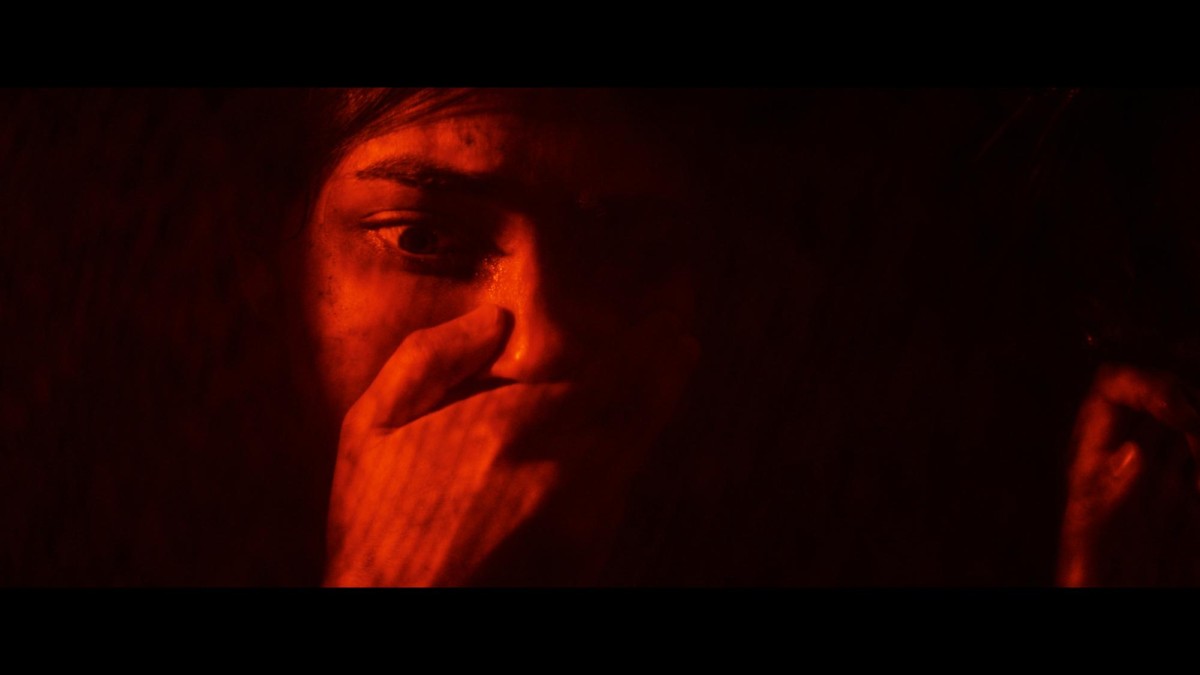Released on Sept. 22, “It Lives Inside” is the story of a suburban Indian American teenage girl, her waning connection to her culture and the demonic Hindu spirit that haunts her. In collaboration with Raymond Mansfield and Sean McKittrick, the producers of Jordan Peele’s “Get Out,” and released with the independent film distributor Neon, Bishal Dutta’s debut film is groundbreaking for the South Asian narrative at its core. The film premiered at the South by Southwest festival earlier this year.
“It Lives Inside” takes us into the life of Samidha (Megan Suri). As Samidha grows up in a predominantly white town, she learns to distance herself from anything that might spotlight her cultural identity — she goes by Sam at school, responds to her parents in English instead of Hindi, and mysteriously breaks off her friendship with the other Indian girl in their high school, Tamira (Mohana Krishnan). Things worsen when she lashes out at Tamira, unleashing a folkloric Hindu monster.
While gripping in its premise, “It Lives Inside” is ultimately disappointing in its attempt to grapple with questions of cultural identity, alienation and belonging. I was determined to love this movie for the South Asian artists involved, but ended up puzzled and unfulfilled. Rather than brimming with pride for the portrayal of my cultural experience in a beloved genre, it felt like any other horror movie, except with a few half-baked details of the Indian American experience thrown in for good measure.
Samidha’s insecurities and experiences of smelling like Indian food on her way to school, being asked if she can say something in “Hindu,” and feeling overwhelmed by her overbearing immigrant mother — while relatable and often accurate — only scratch the surface of the potential this film had in depicting the Indian American adolescent experience.
Movies like “Poltergeist” and “A Nightmare on Elm Street” contributed to Dutta’s social education as a child new to the United States. For him, “It Lives Inside” was an homage to these kinds of movies, so the film feels familiar in its narrative and format. Although this unsettling atmosphere was compelling at the start of the film, the latter half felt slow and dragging.
This film did succeed in creating the creepy, dreadful atmosphere characteristic of a horror film. Dutta’s long shots of silhouettes coupled with an ominous background score forged a looming sense of fear essential to the genre, although the visual effects were lackluster.
The film left me feeling heavy with the weight of its untapped potential and an overall weak allegory. The connection between the demonic spirit and Samidha’s lack of cultural interest was tenuous at best, and there were several facets of her experience that Dutta failed to flesh out. The moral seemed literal: Losing sight of your origins will lead to being haunted by malevolent Hindu demons. It lacked an adequate exploration of the broader-reaching mental and emotional reasons behind her alienation in the first place.
However, on my rainy walk home, I reflected on the reasons behind my disappointment in “It Lives Inside.” I realized I had fallen into the trap of expecting every South-Asian-centered narrative to be the epitome of excellence. I had unfairly expected “It Lives Inside” to deliver a poignant, thought-provoking commentary on the Indian American experience when, in actuality, it was simply a horror movie about an Indian girl.
Horror films starring people of color don’t always have to be revolutionary because representation comes in many forms, and any representation on screen is progress. Despite my criticisms of it, this film made considerable strides in the right direction for South Asian artists in Hollywood. An American horror movie has never centered around Indian people before. Although the final result could have been improved, this feat alone is remarkable.
We don’t set the same expectations of excellence on horror movies with predominantly white casts, so why should that apply when it’s a person of color at the center? No one expected “The Nun II” to spark an enlightening conversation about Catholicism. Not every director or story needs to have the same quality as Jordan Peele’s “Get Out” or “Us.” “It Lives Inside” shouldn’t be held to any higher standard because representation is representation, no matter its form.
I do hope that South Asians in the film industry, like Dutta, continue to make significant strides and that people continue to watch their movies — even if they ultimately fall a bit flat.
Contact Lulu Chatterjee at [email protected].























































































































































